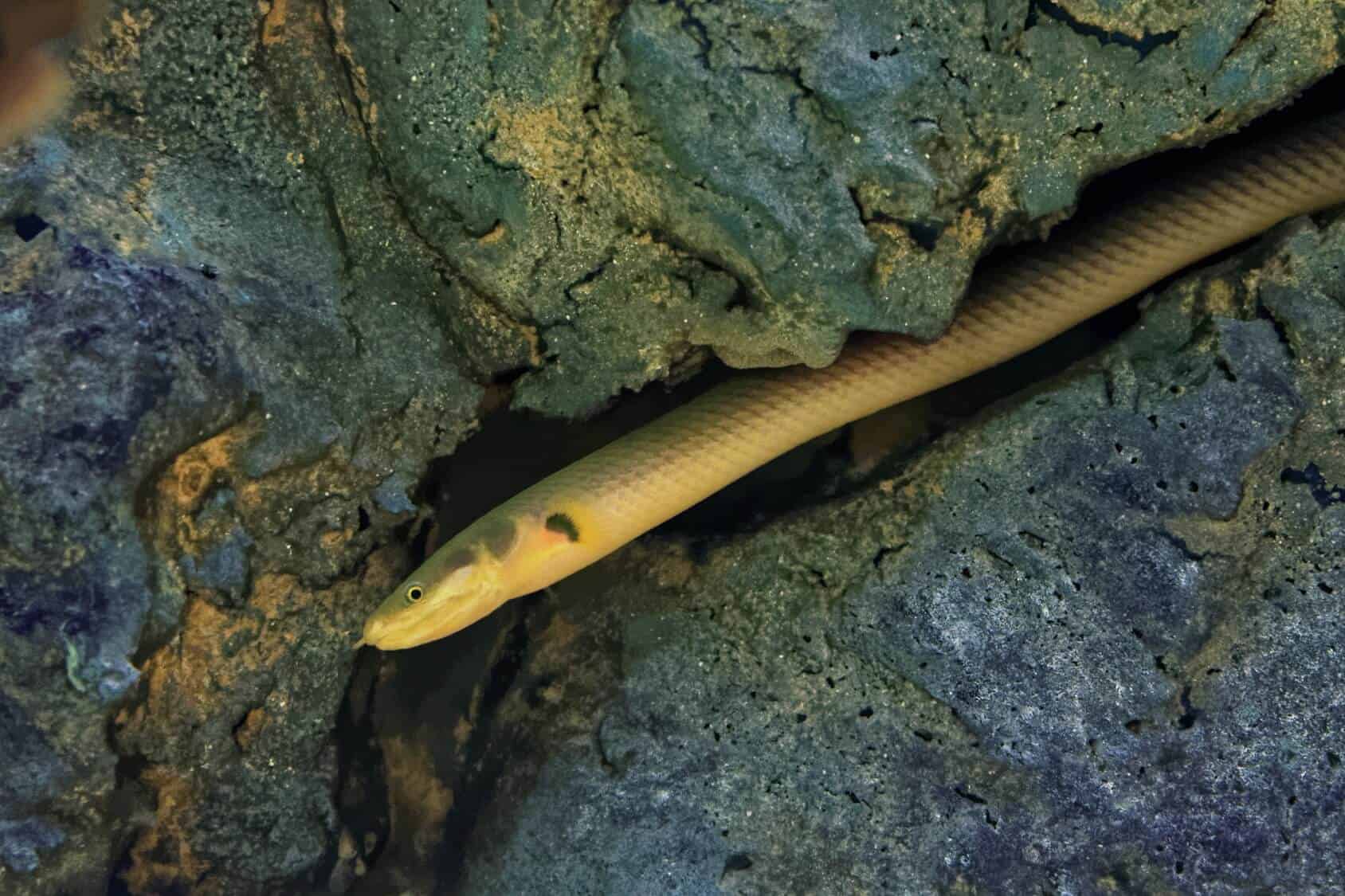- Joined
- May 19, 2022
- Messages
- 2,321
- Reaction score
- 3,678
Per another thread my original built in LED lighting started to fail and I replaced with a totally different light system. The failure manifested with a few burned out LEDs and it started to flicker very fast. Of course I shut it down and went with ambient light from a window next to the tank until the new light arrived and a bit longer due to figuring out how I was going to mount.
The actual question concerns my rope fish. While there have been periods when I didn't have a tank I've had a rope in every tank since the mid 1980s and my current rope just didn't act the same as others. Ya, they tend to be nocturnal hunters but, in the past, they were still active and all over the tank during the day. Shoot, I've had them eat out of my hand. My current rope has acted very different than those of the past spending most of the time in hiding and very seldom coming out during the day when the lights are on. However, with the new lights, he is now out and about a LOT in the last couple of days.
Ropes have poor eye sight but are still sensitive to light. Is it possible that he just didn't like the original lights? Perhaps the lights flickered from the start but just too fast for me to notice but enough to bother his eyes? Another thing that makes me think that the new lights could be a factor in relation to his current behavior is that, in the past, when out and about, he was almost always moving very fast and then gone. Now, for a couple of days with the new light, he is out a lot and just casually roaming around. In the last two days I have seen more of him than in the last two months. He is just now seeming to act more like what I have experienced in the past even to the point that he was just draped over a floating plant like he was resting in a hammock. Sigh, the floating plants are not supposed to float but are due to my stupid digging cichlids.
So, is it possible that he just didn't like the original light?
BTW, I always seem to refer to a rope as he but I really have no clue as to the gender of this beastie. Somehow they all just seem to look like a 'he' to me.
The actual question concerns my rope fish. While there have been periods when I didn't have a tank I've had a rope in every tank since the mid 1980s and my current rope just didn't act the same as others. Ya, they tend to be nocturnal hunters but, in the past, they were still active and all over the tank during the day. Shoot, I've had them eat out of my hand. My current rope has acted very different than those of the past spending most of the time in hiding and very seldom coming out during the day when the lights are on. However, with the new lights, he is now out and about a LOT in the last couple of days.
Ropes have poor eye sight but are still sensitive to light. Is it possible that he just didn't like the original lights? Perhaps the lights flickered from the start but just too fast for me to notice but enough to bother his eyes? Another thing that makes me think that the new lights could be a factor in relation to his current behavior is that, in the past, when out and about, he was almost always moving very fast and then gone. Now, for a couple of days with the new light, he is out a lot and just casually roaming around. In the last two days I have seen more of him than in the last two months. He is just now seeming to act more like what I have experienced in the past even to the point that he was just draped over a floating plant like he was resting in a hammock. Sigh, the floating plants are not supposed to float but are due to my stupid digging cichlids.
So, is it possible that he just didn't like the original light?

BTW, I always seem to refer to a rope as he but I really have no clue as to the gender of this beastie. Somehow they all just seem to look like a 'he' to me.


